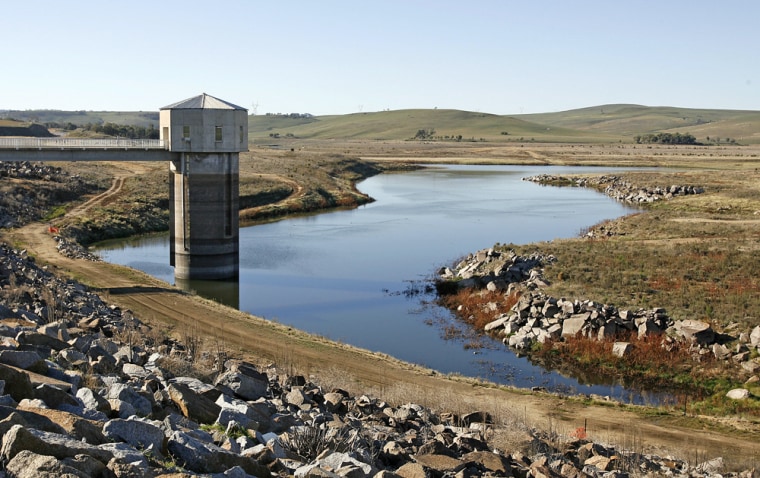A decade-long drought in Australia’s most important crop-growing region is worsening and there is little hope for relief from either saving rains or a new government conservation plan, officials said Thursday.
The Murray-Darling river system, which produces 40 percent of Australia’s fruit, vegetables and grain, is facing an economic and ecological crisis because of a decade of below-average rainfall.
The Murray-Darling Basin Commission, which monitors water flows in the river catchment, said in a report Thursday that hopes of the cooler months bringing drought-breaking rains had faded.
'Getting worse'
“Regrettably, the drought is getting worse,” commission chief executive Wendy Craik told reporters.
And Prime Minister Kevin Rudd has conceded that his government’s new conservation plan won’t produce results fast enough to stave off all of the environmental damage to the river system.
Much of Australia has been gripped for a decade by its worst drought in a century, hindering the country’s economic growth and sparking drinking water restrictions in all major cities.
Economist Ross Garnaut said in a government-commissioned report this month that the Murray-Darling basin faced a 92 percent decline in irrigated agricultural production by the year 2100 because of drying conditions.
The drought already has bankrupted some farmers and threatened the economic viability of some of the local agricultural towns.
Lowest rainwater levels in 117 years
Thursday’s report said the level of rainwater to the Murray-Darling system in June was the lowest on record and only 16 percent of the average. Records have been kept for 117 years.
Levels during the autumn months from March through May were only marginally higher than the driest autumn on record, which was last year, and only 25 percent of the average. The annual total is also likely to be below average, the report said.
Bureau of Meteorology National Climate Center Superintendent Neil Plummer agreed with that forecast, adding that rain this week was nowhere near enough to relieve the drought.
'An absolute shocker'
“Autumn can only be described as an absolute shocker in terms of climate conditions for the basin,” he told reporters.
He said temperatures were likely to be above average over the next three months, and Craik said that meant rain is more likely to soak into sun-baked earth or evaporate than flow into the river.
Government leaders last week struck a $3.6 billion agreement to conserve water in the river system by reducing the amount of water lost to leaking pipes and evaporation from open irrigation channels.
The plan eventually will allow more water to flow into the river’s parched lower reaches where lakes are becoming acidic and wildlife habitats are threatened.
But scientists have warned the federal government that the unique ecology of the lower reaches will be irreversibly damaged if there is not sufficient water flow by October — a deadline unlikely to be met by the plan, by Rudd’s own admission.
